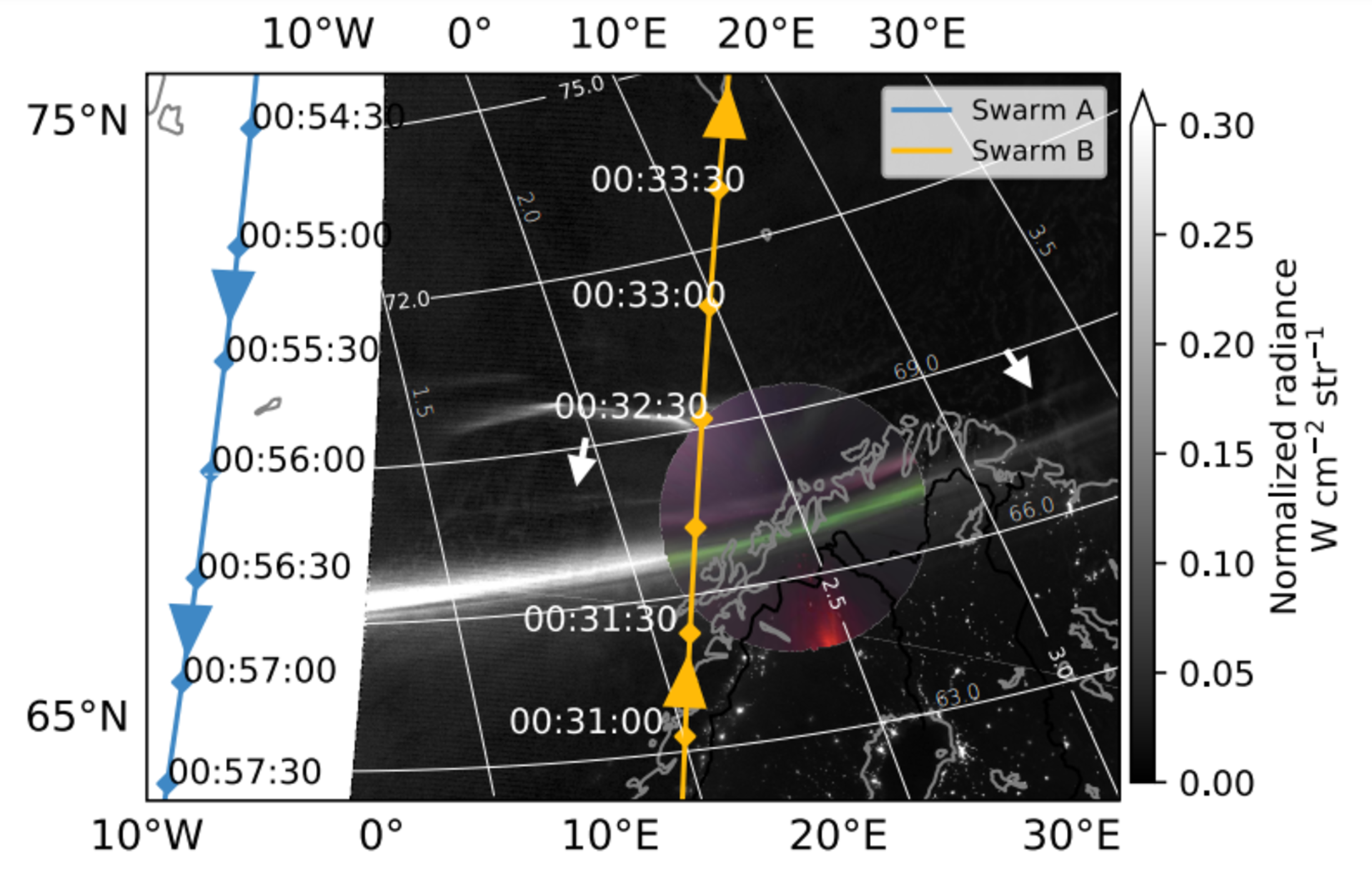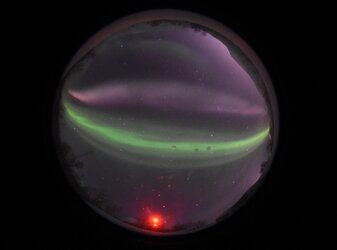

Swarm senses Steve’s twin
Ever since aurora chasers discovered Steve, a mysterious ribbon of purple light in the night sky, scientists have wondered whether it might have a secret twin. Now, thanks to a photographer’s keen eye, and data from ESA’s Swarm satellites, we may have found it. While none of ESA’s Swarm satellites flew directly through the arc at the precise time and place observed by cameras on the ground, two of the satellites’ electric field instruments were able to measure the conditions in the purple region before, during and after the event.
This shows the projection of the day-night-band image and all-sky image to 100 km altitude. Both the purple and green arcs extended east–west widely. White arrows guide the continuity of the purple arc in the day-night-band image. Blue and yellow arrows indicate the trajectories of Swarm A and B, respectively. White grid lines show the altitude adjustment corrected geomagnetic latitude and local time.
Published paper: Dawn-side counterpart of STEVE?
Read full ESA story: Swarm helps discover Steve's long-lost twin





